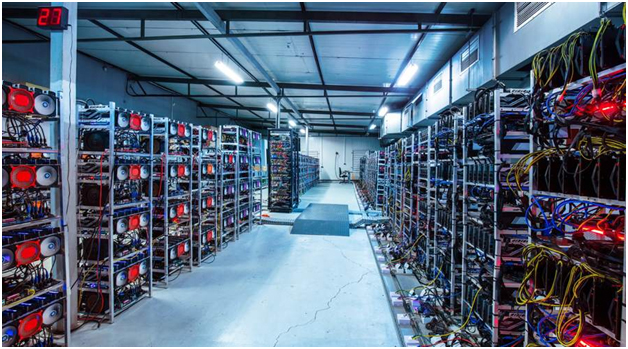Crypto Mining Sector on Track for $3.3 Billion Valuation by 2030
The cryptocurrency mining industry is entering a new growth phase, with global figures revealing a market worth $2.2 billion in 2024. By 2030, this is forecast to rise to over $3.3 billion, based on data from a recent market report by Research And Markets. The industry is expanding at a compound annual growth rate of nearly 7%, marking a solid upward trend through to the end of the decade.
Despite fluctuations in token values, the mining sector has seen strategic changes in how operators manage their resources. Many smaller and less equipped players have exited, while established organisations have taken steps to strengthen their operations. These include securing longer-term electricity agreements, consolidating infrastructure, and investing in advanced mining technology.

Image 1 (Source: Finance Magnates)
Renewed Purpose and Emerging Strategies
Mining continues to serve as a gateway into the broader digital asset landscape, particularly for groups seeking exposure to assets such as Bitcoin without directly purchasing them on exchanges. According to ResearchAndMarkets.com analysts, Bitcoin’s deflationary design and limited supply have made mining a strategic method of accumulating digital assets for those with a long-term outlook.
The appeal is not just financial. Mining is becoming more integrated with the energy sector, especially in areas where excess power can be redirected to mining activity. Some operations are located near renewable energy facilities, using surplus electricity during low-demand periods. Others are engaging with electricity providers through demand response schemes to help stabilise grids. These setups offer a dual benefit — supporting energy infrastructure while maintaining mining productivity.
As more institutional investors and governments show interest in digital assets and central bank digital currencies, mining is being seen as part of national infrastructure. It plays a role in decentralised systems and is increasingly viewed as a component of digital economic policy by state-level stakeholders.
Technology and Efficiency at the Core
Progress in mining hardware is rapidly improving operational efficiency. Specialised machines — particularly application-specific integrated circuits (ASICs) — now deliver far greater computing power using less energy. Devices like the Antminer range from Bitmain and WhatsMiner models from MicroBT have become widely adopted, allowing for significant increases in hash rate without sacrificing energy performance.
Thermal management has also advanced. Mining companies are now implementing a range of cooling technologies to prevent hardware from overheating. These include traditional air-cooling systems, as well as more efficient liquid and immersion cooling techniques. These innovations help protect hardware, extend its lifespan, and contribute to better overall returns.
In addition to hardware upgrades, software and automation are enhancing day-to-day operations. Artificial intelligence is increasingly used to monitor equipment performance, predict maintenance issues, and optimise energy usage. Fleet management software can now adjust power usage based on factors like real-time electricity prices and mining difficulty, giving operators more control over costs.
Some miners are adopting mobile, container-based setups that can be transported to locations with favourable conditions. This flexibility allows them to operate in regions with cheaper or cleaner energy sources, improving margins while aligning with environmental goals.
Blockchain networks themselves are also evolving. Updates in connection protocols, such as the growing use of Stratum v2, are reducing waste and improving mining reliability. At the same time, activity is not limited to Bitcoin. Altcoins like Litecoin and Monero — which continue to use proof-of-work mining — are also contributing to the diversity of mining efforts worldwide.

Image 2 (Source: Unsplash)
Global Players and Regional Leadership
The market includes a mix of public companies, private mining farms, equipment suppliers, and data centre providers. Major firms such as Marathon Digital Holdings, Bitfarms, Hive Blockchain, and Riot Platforms operate large-scale farms with substantial financing and advanced infrastructure. These businesses often have vertically integrated power solutions and maintain direct access to liquidity in crypto markets.
The geographical shift in mining activity has been significant in recent years. After China imposed restrictions on mining in 2021, the United States has emerged as the top contributor to Bitcoin’s global hash rate. American states like Texas, Georgia, and Wyoming have become key destinations due to their low-cost energy, pro-business regulations, and underutilised renewable capacity.
Other countries are also playing a competitive role. Canada, Kazakhstan, Russia, Paraguay, and the United Arab Emirates have all invested in infrastructure to support mining, leveraging advantages like low temperatures, energy surpluses, and in some cases, sovereign support. Mining operators are increasingly setting up near hydroelectric plants or in oil-producing areas where flare gas — a by-product of extraction — can be converted into usable energy.
According to the report, large-scale miners are expected to grow their segment by an annual rate of 9% through 2030, while smaller-scale operations will also expand, reaching $1.9 billion by the same year.
The United States remains the most valuable market, expected to reach over $592.3 million in 2024. China, while less dominant than in previous years, is projected to see strong recovery and is forecast to hit around $670 million by 2030. Markets in Japan, Canada, Germany, and across the Asia-Pacific are also expected to contribute meaningfully to sector growth.

